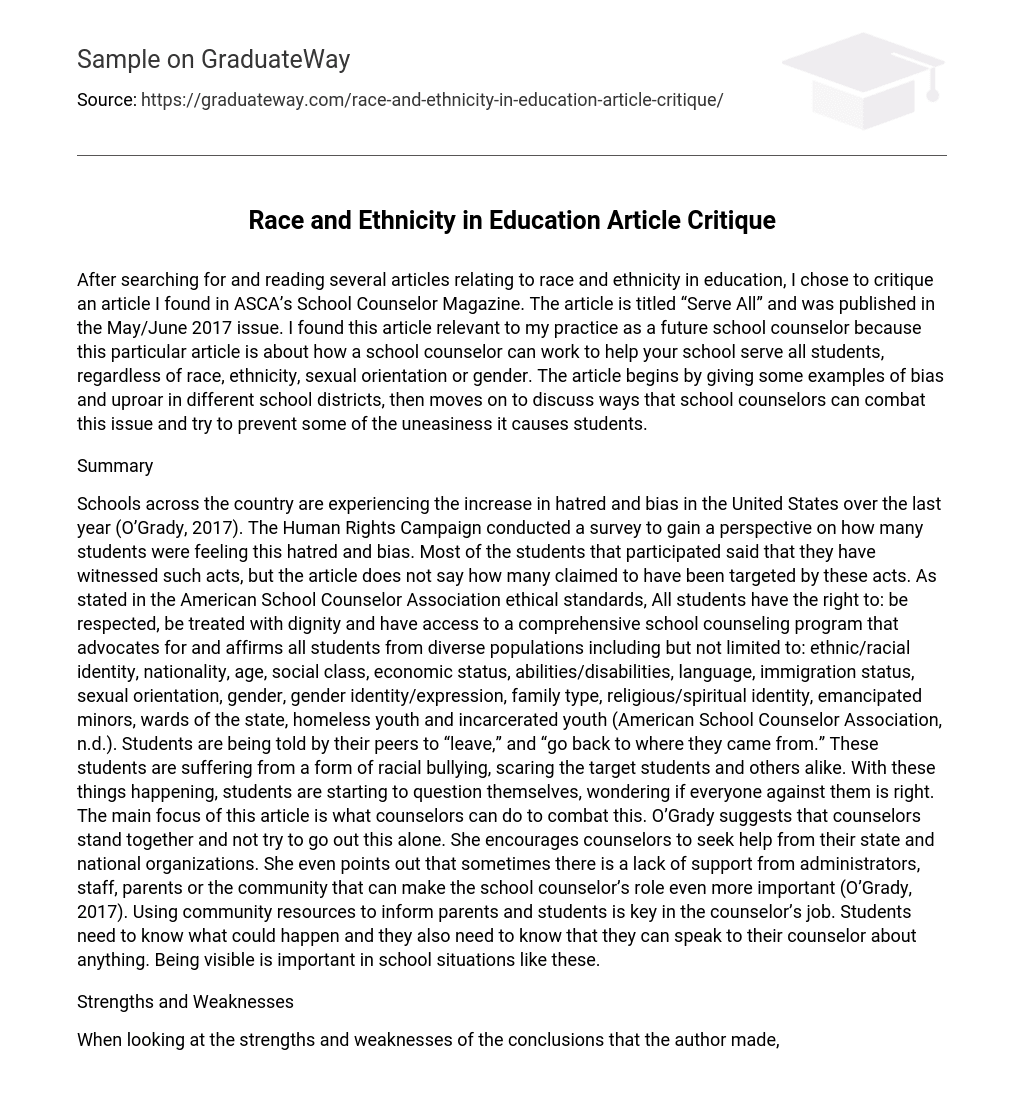After searching for and reading several articles relating to race and ethnicity in education, I chose to critique an article I found in ASCA’s School Counselor Magazine. The article is titled “Serve All” and was published in the May/June 2017 issue. I found this article relevant to my practice as a future school counselor because this particular article is about how a school counselor can work to help your school serve all students, regardless of race, ethnicity, sexual orientation or gender. The article begins by giving some examples of bias and uproar in different school districts, then moves on to discuss ways that school counselors can combat this issue and try to prevent some of the uneasiness it causes students.
Summary
Schools across the country are experiencing the increase in hatred and bias in the United States over the last year (O’Grady, 2017). The Human Rights Campaign conducted a survey to gain a perspective on how many students were feeling this hatred and bias. Most of the students that participated said that they have witnessed such acts, but the article does not say how many claimed to have been targeted by these acts. As stated in the American School Counselor Association ethical standards, All students have the right to: be respected, be treated with dignity and have access to a comprehensive school counseling program that advocates for and affirms all students from diverse populations including but not limited to: ethnic/racial identity, nationality, age, social class, economic status, abilities/disabilities, language, immigration status, sexual orientation, gender, gender identity/expression, family type, religious/spiritual identity, emancipated minors, wards of the state, homeless youth and incarcerated youth (American School Counselor Association, n.d.). Students are being told by their peers to “leave,” and “go back to where they came from.” These students are suffering from a form of racial bullying, scaring the target students and others alike. With these things happening, students are starting to question themselves, wondering if everyone against them is right. The main focus of this article is what counselors can do to combat this. O’Grady suggests that counselors stand together and not try to go out this alone. She encourages counselors to seek help from their state and national organizations. She even points out that sometimes there is a lack of support from administrators, staff, parents or the community that can make the school counselor’s role even more important (O’Grady, 2017). Using community resources to inform parents and students is key in the counselor’s job. Students need to know what could happen and they also need to know that they can speak to their counselor about anything. Being visible is important in school situations like these.
Strengths and Weaknesses
When looking at the strengths and weaknesses of the conclusions that the author made, strengths of the article were that the author hit on a very difficult topic. However, I felt that there were still a lot of unanswered questions. Could she have been more specific on what to do when certain issues arise? I would have liked to have seen more specifics. Rather, the author just stated to come together and use your resources. I feel as though the author could have used more examples throughout the article instead of just one main example in the beginning. I did not see any evidence of potential bias displayed in the article.
Implications
A lot of good information on resources can be taken from this article for a school counselor. I got the idea to put up a sign that says “safe zone” in my future office so that students know that what is said in my office is just between us. I also took away that it helps for the counselor to be seen within the school, not just in the counseling office. Students sometimes see the school counselor in the same way that they see an administrator, which will not always work in the counselor’s favor. However, after reading this article I feel strongly that if the counselor is seen in the classrooms, lunch room, and hallways students will eventually feel differently about the counselor and be more apt to reach out if needed.





